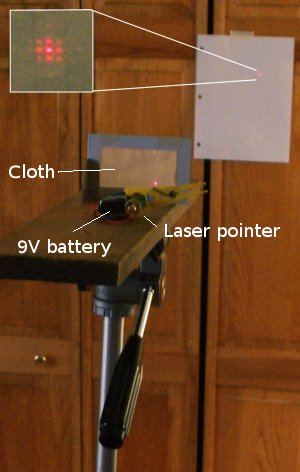 |
 | ||||||||||||
|
|||||||||||||

How long does it take for a car going 75
mph to stop? How fast can a loaded truck be going and still stop in
the same distance as a car?
There is some counter-intuitive stuff going on when it comes to friction. I decided to do an experiment that would (hopefuly) drive the important points home: I had 3 identical small corrugated cardboard boxes. Into one I put a brick, by coincidence it was a snug fit. Into the second I put a block of wood, cut to fit, and the third box was empty. I lined them up side-by-side on the smooth, hard floor. With a broom, I could simultaneously give them a pull towards me, so that all three would achieve the same speed. After one or two feet I would abruptly stop pulling, and the boxes would skid to a halt. Which box do you think would slide the furthest? The one with the brick in it? The empty box? In fact, all three boxes go the same distance. (more) Here are some braking links to explore:
|
|||||||||||||

How to measure the wavelenght of your
laser pointer
All you need is a ruler and a piece of cloth. The cloth needs to be thin, with a square weave (that is, just threads going left-right and threads going up-down). It needs to be thin enough to shine the laser through. Point the laser through the cloth at a wall, and you will see an interference pattern consisting of a central dot, flanked on 4 sides by fainter dots, as shown in the inset in the photo. If you're lucky, there are more dots further out, spaced evenly. The finer the cloth, the larger the space between dots. Measure the space between the dots, and the distance from the cloth to the wall. Lay the cloth on top of a ruler and count how many threads there are per cm. If you're a teacher, this may take a needle and a magnifying glass. That's all. The wavelength of the laser light is wavelength = distance between threads × distance between dots ÷ distance between cloth and wall. Make sure all distances are expressed in the same units. Here's what I got, for 2 separate tries:
To emphasize that you don't really need a fine diffraction grating, I repeated the measurement using a piece of mosquito screen left over from when I built a screen door last summer. The only extra trick is that I angled the piece of screen so that the vertical 'threads' are effectively closer together. I had 40 threads in 5.8 cm, distance to the wall 159 cm, space between 3 dots (2 spaces) was 5 mm. The angle between the screen and the laser beam was 18°, and thus the wavelength came out to be 705 nm. A tad high, but still in the right ballpark.
In the picture you can see I have a piece of wood that attaches to my tripod with
a T-nut. This makes pointing easy. The laser pointer is kept 'on' with the clothes
pin. I don't use the (expensive) batteries that fit in the pointer. Instead, I
rigged up a 9V battery. This lasts for years. I cut a small rectangle of the
cloth and mounted it in a small cardboard frame.
Links:
|
|||||||||||||

What animals will outlive humans?
bla |
|||||||||||||
|
Surface tension
Actually, the question was roughly: " How come when you squeeze a bottle the liquid goes above the rim?" |
|||||||||||||
| |||||||||||||
